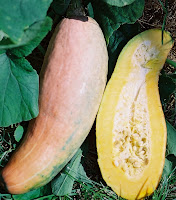Conversion Table
 In answer to a comment that I recieved on my previous blog (kitchen Lore on wordpress), I decided to provide everybody with small conversion tables for weight mesurement, Heat and volumes mesurements. I hope it will help Otherwise for the laziest of us just follow that link : http://www.onlineconversion.com/.
In answer to a comment that I recieved on my previous blog (kitchen Lore on wordpress), I decided to provide everybody with small conversion tables for weight mesurement, Heat and volumes mesurements. I hope it will help Otherwise for the laziest of us just follow that link : http://www.onlineconversion.com/.
Mass
- 1 Milligram (mg) = 0.0154 grains
- 1 Gram (g) = 1000 mg = 0.0353 oz
- 1 Kilogram (Kg) = 1000 g = 2.2046 lb
- 1 Tonne (t) = 1000 Kg = 0.9842 ton
- 1 ounce (oz) = 437.5 grain = 28.35 g
- 1 pound (lb) = 16 oz = 0.4536 Kg
- 1 stone = 14 lb = 6.3503 Kg
- 1 hundredweight (wt) = 112 lb = 50.802 Kg
Volume
- 1 cubic cm (cm3) = 0.0610 in3
- 1 cubic dm (dm3) = 1000 cm3 = 0.0353 ft3
- 1 cubic m (m3) = 1000 dm3 = 1.3080 yd3
- 1 litre (l) = 1 dm3 = 1.76 Pt
- 1 hectolitre (hl) = 100 l = 21.997 gal
- 1 cubic inch (in3) = 16.387 cm3
- 1 cubic foot (ft3) = 1.728 in3 = 0.0283 m3
- 1 fluid ounce (fl oz) = 28.413 ml
- 1 pint (pt) = 20 fl oz = 0.5683 l
- 1 gallon (gal) = 8 pt = 4.5461 l
- 1 fluid ounce U.S (fl oz) = 1.0408 fl oz U.K = 29.574 ml
- 1 pint U.S (pt) = 16 fl oz U.S = 0.8327 pt U.K = 0.4731 l
- 1 gallon (gal) = 0.8327 gal U.K = 3.7854 l
Heat
- Very low, gentle = 225-275 F ; 107-135 C
- Low = 285-325 F ; 140-163 C
- Medium = 350-400 F ; 177-205 C
- High = 410-450 F ; 210-232 C
- Very hot = 475-550 F ; 246-288 C
The formula to convert Fahrenheit temperatures can be converted to Celsius by using the formula C=(F-32)x0.56.
Do chillies and pepper make holes in our stomach?
A few years ago my Mum was diagnosed with a stomach ulcer. At the time her practitioner advised her to avoid the consumption of spicy food and avoid seasoning her food with pepper, telling her that they would increase the irritation of her stomach lining therefore exacerbate her ulcer. About five years later, I started catering college and started studying all food related conditions and conditions that affect the digestive system. I decided then to ask my lecturer about the relation between chillies, pepper and stomach ulcer. His answer was vague : "it is not recommended to eat chillies or use too much pepper as seasoning but there are some studies about it on the way but it is too early to know if it is true or not".

One day, as I was reading a book by the French physicist and chemist Hervé This "Les secrets de la casserole" Edition Belin 1993, he talked about a study made by American gastroenterologist David Y Graham at the department of Medicine, Veterans Affairs Medical Center, Houston, that was looking at the effect of chillies on the stomach lining.
David Graham study consisted of the observation of a panel of 12 volunteers. He started by giving them a "neutral" dinner; a traditional steak and chips. Then they had to eat the same meal, but seasoned with some aspirin. And finally, their third menu consisted of a pizza topped with spicy sausages and different Mexican traditional dishes in which he added as much chillies that it humanely possible to eat. Poor people!

The next step of the study was to subject these volunteers to an endoscopy (basically he made them swallow a very small camera to take pictures of their stomach and intestins). The results were that aspirin effectively attacked their stomach lining but that chillies didn't have any visible corrosive action on their stomach.

The principal ingredient that gives chillies their hot effect in our mouth is capsaicin or 8-methyl-N-vanniyl-6neneamid, for the chemists. It is also found in pepper. David Graham decided, logically, to concentrate his study on this particular molecule and its action on the stomach lining, as it was until then it was said that it had the same effect as aspirin.
Using pure capsaicin, he found no visible effects on the stomach. He even pushed his experience to place some pieces of some of the hottest chillies as well as some crushed pepper directly on the stomach lining, in vivo. The result was still negative. On the other hand, he observed that when he used tabasco, it had a corrosive action on stomach tissues. He explained this, by the fact that the concentration of acetic acid (it constitutes vinegar and is well known to have a aggressive effect on the stomach) was twice that of ordinary vinegar.
So, the results of his study were that even if chillies and pepper generate a pain message from our nerves to the brain, they don't have any particular corrosive action on our stomach nor our intestinal lining. In fact, they have a number of beneficial effects on our digestive system. They stimulate the production of saliva, speed up the intestinal transit and gives us a satisfying feeling after a spicy meal. In another of his studies he also found out that the capsiacin contained in jalapeno peppers have a positive effect on the treatment of the helicobacter pilori (virus linked to stomach ulcer).
after a spicy meal. In another of his studies he also found out that the capsiacin contained in jalapeno peppers have a positive effect on the treatment of the helicobacter pilori (virus linked to stomach ulcer).
 after a spicy meal. In another of his studies he also found out that the capsiacin contained in jalapeno peppers have a positive effect on the treatment of the helicobacter pilori (virus linked to stomach ulcer).
after a spicy meal. In another of his studies he also found out that the capsiacin contained in jalapeno peppers have a positive effect on the treatment of the helicobacter pilori (virus linked to stomach ulcer). In simple words chillies are good for you!
"Exotic" Vegetables
Throughout my readings and years in the kitchen, I came across some vegetables that were totally unknown to me. Nowadays with the plane travel revolution, some of these "exotic" vegetables even make it in our European supermarket. But it never says how to cook them.So I started a list a these unusual vegetables to be able to recognise them quickly, easily and find the best way to cook them. This is what I want to share now. This listing isn't finished, feel free to bring to my attention your discovery to help me extend my little listing.
This is how it works, the first name is its English name, the second its French name then a short description and finally how to cook it.
Cassava ; Manioc ; Starchy root ; Steamed, Boiled, Mashed, roasted or Deep fried.
Manioc ; Manioc ; Starchy root ; Steamed, Boiled, Mashed, roasted or Deep fried.
Yuca ; Yuca ; Fibrous, Starchy root ; Roasted, Pan fried, Mashed, Boiled, Deep fried.
Taro ; Taro ; Starchy root ; Boiled, Mashed, Roasted, Deep fried.
Yam ; Ignam ; Starchy root ; Boiled, Roasted, Mashed, Deep fried.
Parsley root ; Racine de persil ; Fibrous root ; Boiled, Steamed, Roasted.
Arracacha ; Arracacha ; Starchy root ; Boiled, Roasted, Mashed, Steamed Deep fried.
Sunchoke or Jerusalem artichoke ; Topinambour ; Fibrous root ; In soup, Mashed, Roasted, Steamed Pan fried, Deep fried.  It is prone to oxidation so it needs to be pre-cooked in a "blanc".
It is prone to oxidation so it needs to be pre-cooked in a "blanc".
Burdock ; Bardane ; Fibrous root ; Steamed, Roasted, Boiled, Pan fried.  It is prone to oxidation so it needs to be pre-cooked in a "blanc".
It is prone to oxidation so it needs to be pre-cooked in a "blanc".
Tiger nut ; Noix de tigre ; Starchy root ; Boiled, Pan fried, Stewed, Steamed, Stir fried, Roasted.
Jicama or Yam bean ; Jicama ; Starchy root ; Mashed, Steamed, Boiled, Roasted, Deep fried.
Oca or New Zealand Yam ; Truffette acide ; Starchy root ; Boiled, Steamed, Sautéed, Roasted.
Nopales, Cactus pads ; Nopales, Oreilles de cactus ; Fibrous, tart green ; Pickled, Stewed, Steamed, Boiled.
Fiddleheads ; Tetes de fougeres ; Fibrous, tart green ; Steamed, Pickled, Boiled, Pan fried.
Collard ; Chou Collard ; Leafy green ; Steamed, Boiled, Pan fried, Stewed.
Chard ; Cardon ; Fibrous leaf ; Steamed, Boiled, Pan fried, Roasted.
Amaranth ; Amaranth ; Grain ; Boiled, Steamed.
Tomatillo/ Chinese Lantern ; Tomatillo ; Acidic fruit ; Fresh in salad, Pickled, Jam, Roasted, In Salsa, Grilled.
Tamarillo/Tree Tomato ; Tomate en arbre ; Sweet acidic fruit ; Fresh in salads, Pickled, Jam, Roasted, Grilled.
Wax gourd ; Gourde cireuse ; Fleshy, bland Vegetable ; Steamed, Mashed, Roasted, Stewed, Season well.
Lohfa/ Sponge gourd/ Luffa ; Loffa ; Fibrous, Hollow Vegetable ; Steamed, Roasted, Stewed, Season well.
Bottle gourd/Cucuzza/ calabash/ Courge bouteille, Calbasse ; Fleshy, Hollow Vegetable ; Steamed, Stewed, Mashed, Roasted, Season well.
Bitter gourd ; Courge amère ; Ferm, Fleshy, bitter green ; Use like curcumber, Slightly salted in salad, Pickled.
Acorn Squash, Spaghetti Squash ; Courge gland, Spaghetti vegetale ; Stinguy flesh ; Steamed or boiled then gratted with a fork to obtain some spaghetty like fibers.
Kabocha, Cheese squash/ Kabocha ; Courge fromage, Cabosse ; Ferm flesh, Rich, Slightly sweet ; In soup, Roasted, Stewed, Pan fried, Boiled.
Banana squash ; Courge banane ; Ferm fresh, Slightly sweet ; In soup, Roasted, Boiled, Stewed, Pan fried, Stuffed.
Turban squash ; Giraumon a Turban ; Ferm flesh, Watery ; In soup, Roasted, Pan fried, Boiled, Season well.
Hubbard squash ; Giraumon ; Ferm flesh, Slightly sweet ; In soup, Tart filling, Roasted, Pan fried, Boiled, Steamed.
Cushaw ; Courge musquée ; Ferm flesh, Watery, Fibrous ; Roasted, Steamed, Pan fried, Steamed, Season well and do not cook too much.
Chayote ; Chayote ; Firm, Crispy flesh, Slightly starchy, Edible seed ; Raw in a marinade, Roasted, Stewed, Pan fried, Deep fried, Steamed.
Winged Bean ; Haricot asperge ; Ferm, Stingy green ; Steamed, Boiled, Pan fried.
Okra ; Okra ; Ferm, Tart, Crispy Hollow green ; Deep fried, Raw in salad, marinated do not boil it will become soft and very slimmy.
Subscribe to:
Posts (Atom)









































































